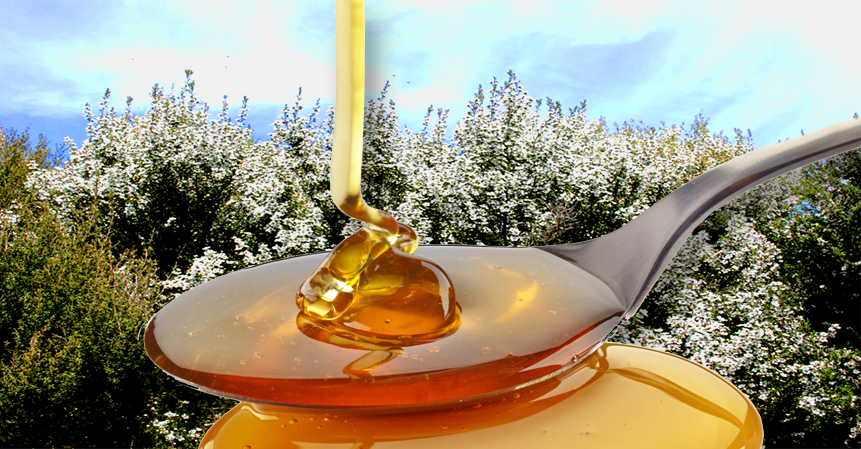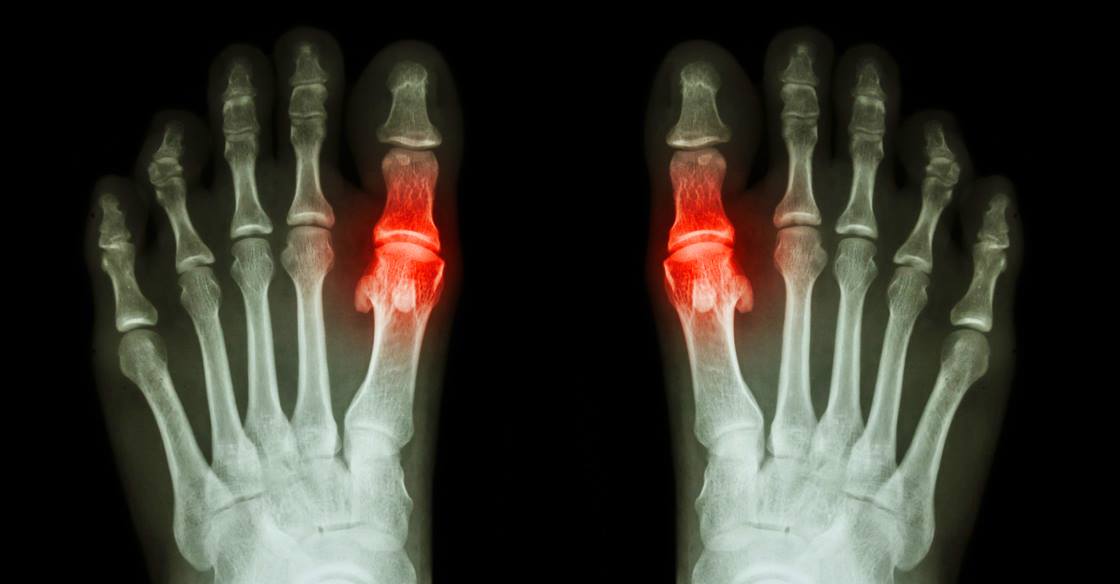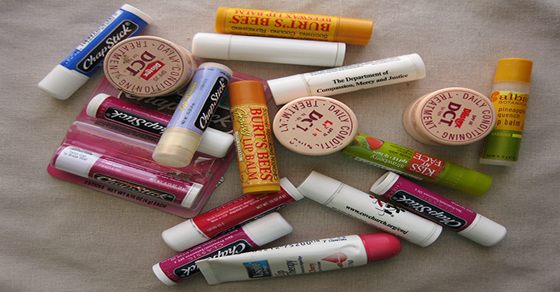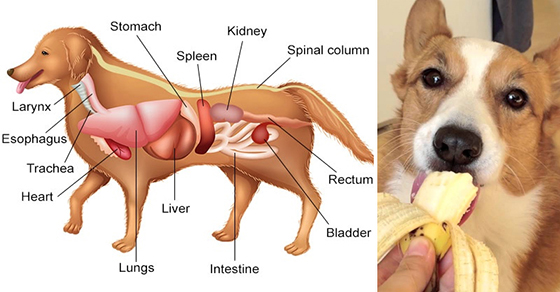Being good pet parents, we are always looking for ways to please our fur babies. As hard as many of us may try to keep our dogs on their canine diets, sometimes we just can’t resist slipping them an occasional human morsel. A lot of people feel that dogs should not be given any “people” food, however, if you’d like to reward your pet with table scraps, you actually can safely, just make sure that you choose people foods that aren’t harmful for canines.
Here are a few “dog-approved” people foods that are actually are perfectly safe … and even healthy!
Coconut & Coconut Oil
Coconut is made up of a beneficial fatty acid chain called Lauric acid, and when dogs and humans synthesize Lauric acid it produces a compound called monoglyceride monolaurin. This substance helps fight and destroy viruses and various pathogenic bacteria, thus protecting your pets from infection and boosting their immune systems. Additionally, coconut contains albumin, which is a water-soluble protein found in many animal tissues and liquids.
Many diseases and ailments, like yeast infections, smelly coats, hot spots, cuts that have been infected, and even cracked paws, can all be cured with just a jar of “virgin coconut oil.” When all forms of diet remedies have failed, then it is time to try out this miracle natural medicine for your dog. Virgin coconut oil means that it is unrefined, and it can be used for both dogs and humans. Coconut Oil can help reduce cancer risks. It also improves the digestion of your dog and becomes medicine for most digestive upsets.
Thyroid function is also kept normal with coconut oil. It can give your dog a smooth glossy coat, as well as healthy, supple skin. Yeast and fungal infections are also treated and prevented through the use of coconut oil. Arthritis and similar pains can also be minimized or treated. Coconut & coconut oil can also balance your dog’s metabolism, and keep weight under control. Coconut & its oil are also something that your dog will most likely love to eat, and gobble up. Mix it with their food it can cure many picky eaters.
Peanut Butter (Conflicting Information PLEASE READ CAREFULLY)
This is a favorite treat of many canines, and has been for years. It is recommended by many professionals as a safe snack, and is added to hundreds of dog treat products. Not only is it a good source of protein, but it also contains heart healthy fats, vitamin B, niacin, and vitamin E. But some information shows that it could be dangerous to dogs as well as humans. While I have not heard of any dogs having an issue with peanut butter, I will share what I have found.
It is said that most peanut butter contains Aflatoxins, that are naturally occurring mycotoxins produced by a fungus called Aspergillus. These are carcinogenic, cancer-causing substances shown to be toxic to the liver, and are known to cause liver cancer in laboratory animals.
According to Dr. Andrew Weil,
A few years ago, Consumers Union looked into the question of aflatoxins in peanut butter and found that the amounts detectable varied from brand to brand. The lowest amounts were found in the big supermarket brands such as Peter Pan, Jif and Skippy. The highest levels were found in peanut butter ground fresh in health food stores.
BUT, before you break out the Jif for you or your dog, you need to know that another issue with the cheaper brands is that they contain trans-fatty acids. These are one of the most toxic food substances today, due to the highly toxic process that makes foods more stable, and sit on shelves for a long time. Hydrogenation is the process of taking a plant oil, adding a nickel catalyst, heating it, and then removing the nickel catalyst. This results in a highly toxic fat that causes diabetes, heart disease and chronic inflammation. If the peanut butter you buy contains trans fats, hydrogenated or partially hydrogenated oils in the ingredients don’t buy it!
And if trans fats aren’t bad enough, roasting nuts can also cause the fats in peanuts to go rancid. So if you are going to buy peanut butter, at the very least, make sure it’s raw and doesn’t contain hydrogenated fats. But of course, you still may have to deal with the aflatoxins. One way to help avoid the effects of aflatoxins, is to buy Earth Balance Creamy Coconut & Peanut Spread, as the coconut oil in the peanut butter should kill the fungus that causes the aflatoxins.
Studies have found that coconut oil can kill viruses that cause influenza, herpes, measles, hepatitis C, SARS, AIDS, and other illnesses. It kills bacteria that cause ulcers, throat infections, urinary tract infections, gum disease and cavities, pneumonia, and gonorrhea, and other diseases. It also kills fungi and yeasts that cause candidiasis, ringworm, athlete’s foot, thrush, diaper rash, and other infections, and even kills tapeworms, lice, giardia, and other parasites.
Lean Meat
Think chicken, beef, or pork with no visible fat and no added sauces or seasonings can be a great training treat or can add a bit of good-quality extra protein to your dog’s diet. Lean meat is an excellent, balanced source of amino acids, the building blocks of muscle in your dog’s body. Meat is also a great source of B vitamins (Thiamin, Riboflavin, Niacin, Pantothenic acid, Pyridoxine, and Cobalamine). These vitamins are involved in energy metabolism in the body. Meat also makes a good meal replacement if you’re in a pinch and out of dog food.
Liver
Used in moderation, this meat is also a good choice and available freeze-dried in most pet stores It makes a great training treat, that you can also buy fresh in the grocery store to feed at home. Fresh liver can be cooked and then baked to make your own liver treats. Liver is an excellent source of B vitamins, Vitamin A, and Vitamin K. It is also a great source of iron. Too much liver may be toxic to dogs because of its high vitamin A content, so it is best to limit the amount of liver fed to your dog to not more than 1 g of fresh liver/Kg body weight per day.
Salmon & Tuna
These are good sources of omega 3 fatty acids, which are responsible for keeping your dog’s coat healthy and shiny, as well as supporting your dog’s immune system. Feed your dog cooked salmon, add salmon oil to food, or slip them some of your unwanted fish skins. Tuna may be a classic cat snack. But despite stereotypes, dogs can eat tuna too, and it’s healthy offering protein, vitamins on top of the omega-3 fatty acids.
Eggs
Scrambling up an egg for your pup is a great way to give their diet a protein boost. Eggs are also a source of easily digestible riboflavin and selenium, making them a healthy snack.
Cheese & Cottage Cheese
A great treat for a dog as long as they are not lactose intolerant, which a small percentage are. So if you’re unsure, make sure to monitor your dog’s reaction. Opt for low or reduced fat varieties and don’t overfeed, as many cheeses can be high in fat. Cottage cheese is typically a good choice because it is high in protein and calcium and it’s fairly bland, so it can be a good way to add some extra protein to your dog’s diet.
Greek Yogurt & Kefir
High in calcium and protein, but make sure to only choose yogurts that do not contain artificial sweeteners or added sugars. Yogurts with active bacteria can act as a probiotic and are good for your dog’s digestive system.
Oatmeal
This is a great source of soluble fiber, which can be especially beneficial for older dogs with bowel irregularity issues. It is also a great alternate grain for dogs allergic to wheat. Make sure to cook oatmeal before serving it to your dog.
Pasta
Dogs can eat pasta, which is really nothing more than flour, water, and sometimes eggs. All of these ingredients are safe for dogs, so any variety of pasta should be fine but I lean toward whole grain pasta. Although it’s probably best to hold the commercial pasta sauce, as these are usually acidic, and contain a lot of sugar and salt, which can upset your dog’s tummy. Also, keep in mind that some dogs are allergic to wheat, so if that’s the case, leave pasta off the menu.
Rice/Brown Rice
This is good to use when your dog has an upset tummy and needs a bland meal. There are a variety of different types of rice. Brown rice is a little higher in protein & fiber and a little lower in fat when compared to white rice. White or instant rice is an easily digestible carbohydrate which makes it a good source of energy which is especially good when feeding an older dog.
Sweet Potatoes
are another source of dietary fiber and contain vitamin B6, vitamin C, beta carotene, and manganese. Sweet potatoes are great sliced and dehydrated as a chewy treat for your dog. There are so many dog treats on the market that we often overlook the simple, healthy, and reasonably priced treats available at our grocery store.
Popcorn
This is best when it is air popped with no butter or salt. It makes a great low calorie treat, contains potassium as well as the bone-building minerals phosphorous, magnesium, and calcium. So snuggle up and share that popcorn with your furry friend next time you watch a movie.
Flax Seed (milled or oil)
This is a good source of omega-3 fatty acids that are good for skin and coat. Whole flax seeds are best if ground right before feeding as this type of fat can go rancid quickly. Flax seed can also be added to your dog’s diet as a source of fiber. Flax oil is a more concentrated form of omega- 3 fatty acids without the fiber. Make sure that you store the oil or seeds in the fridge in an air tight dark container.
Baby Carrots
These are great for a dog’s teeth, they are low calories and high in fiber and beta carotene/vitamin A.
Pumpkin, Squash & Zucchini
Good source of fiber as well as beta-carotene/vitamin A. It can help keep the GI tract moving and can aid with digestive issues. Like pumpkin, squash can be added to bulk up his stool and is a good source of beta-carotene & vitamin A). Be sure to remove the seeds. Zucchini like other squashes makes for a delicious and healthy snack, providing potassium, folate and vitamin content make it healthy for you and your dog, and no part of this vegetables is toxic to canines.
Green Beans
Make a great treat for your dog since they are filling and low in calories. Select beans that have no added salt.
Peas
These can be added right to your dog’s food, frozen or thawed. Peas are a good source of the B vitamin Thiamin, phosphorous, and potassium.
Broccoli
This vitamin-rich vegetable can be a great occasional nutrition boost for dogs. However, it shouldn’t make up more than 10 percent of a dog’s diet as it could cause gastrointestinal irritation.
Seaweed Nori
Dried edible seaweed (red algae species), is a Japanese staple often associated with sushi. It is available in some supermarkets, and certainly in those with Asian food items. It has protein, soluble fiber, Vitamins C, E and all the B vitamins, and minerals such as zinc and copper. It also contains some lesser-known sterols and chlorophyll, which have been investigated for their effects on regulating metabolism. Nori has some beneficial effects on fat metabolism, immune function and anti-tumor response. Nori does not have a strong odor or flavor, and the paper-thin sheets can be torn and soaked in broth, then added to food, or just added dry. My dog actually loves Annie Chun’s Seaweed Snacks.
Fruit Salad
There are lots of fruits that are sweet, delicious and healthy for dogs to eat. Strawberries, blueberries, apples, cantaloupe, watermelon and bananas are all great choices.
Apple Slices
Help to clean residue off a dog’s teeth, which helps to freshen her breath. Apples are a good source of fiber as well as vitamin A and C. Make sure to take out the seeds and the core before feeding to your dog, as these can be choking hazards.
Cranberries
Fresh cranberries have many health benefits and provide vitamins A, B1, B2 and C, and prevent urinary tract infections. Just be sure not to give your dog too many cranberries as they may make him gassy.
Pears
Dogs can eat pears safely, but the cores — specifically the seeds — can be toxic to canines. Therefore, you don’t want to simply toss a whole pear to a dog and watch him go to town, because he may get sick. It’s a better idea to cut a pear up and feed the pieces to your dog while throwing the core away.
Pineapple
Can be a special treat for your dog. In small amounts, pineapple is beneficial for your dog. The fruit is rich in fructose, fiber, vitamin and mineral content. Your dog can eat pineapple to boost its immune system and improve digestion. Bromelain, found in pineapple is an enzyme that helps decompose protein which is very important to a dog. By giving your dog pineapple you are increasing his ability to absorb this protein. In essence from the dogs increased ability to digest, he is able to absorb more essential elements from the food that he consumes.
Parsley
This herb has long been thought to improve “doggie breath”, so next time you are baking treats for your dog, try adding a few tablespoons of chopped parsley for added flavor and color. Parsley can also be a good source of calcium, potassium, and beta-carotene.
Mint
Peppermint is strong but safe for dogs. Try using it as an ingredient if you bake your own homemade dog biscuits. It helps freshen your pal’s bad breath, and since peppermint has long been used to help settle upset tummies, you can even use it to help the next time your dog is a bit “barfy.”
Cinnamon
A sprinkle of cinnamon every now and then is just as good for your dog as it is for you. Cinnamon has been long used to cure nausea and gas, and has been used to boost energy, circulation, digestion and brain health. Don’t overdo it, though! Too much cinnamon can have an anti-clotting effect.
Turmeric
This is one of the most promising cancer prevention foods and can be found in your spice rack. The active compound in turmeric is curcumin, which has been shown to prevent the growth or spread of cancer cells in many types of cancer. It does this by acting as an anti-inflammatory and antioxidant, and by encouraging cancer cell death. Although there are no studies in dogs that prove a clear cancer preventive function, there are many studies done in other species and with cells that clearly demonstrate curcumin’s efficacy against cancer cells. For example, a dose of 80 mg/kg body weight was effective in preventing induced cancer in guinea pigs. While this may not be directly relatable to dogs, it does show that only a small amount should be required. Next time you make a batch of dog treats, add a couple of teaspoons of turmeric to the recipe. You’ll add a new flavour for your dog to try and will boost her intake of antioxidants.
Spirulina
This is a type of algae that is high in protein, vitamins, minerals, and essential fatty acids, it makes an ideal addition to a healthy diet. However, spirulina also has some added health benefits above and beyond basic nutrition. In many experiments based both on animals and humans, it was found that spirulina supported heart health by lowering the amount of fat in the blood, as well as lowering inflammation. The maximum dose should be 1 to 2 tablespoons for a 45 lb (20 kg) dog. As with all supplements and new foods, introduce it to your dog slowly over time.
Carob
Almost every dog owner knows that chocolate is poisonous to their pets, but there’s no reason why your pooch can’t enjoy carob. Not only does carob not contain caffeine or the theobromine that makes chocolate so deadly for dogs, but it actually has many healthy properties. Carob contains plenty of vitamins and minerals, plus fiber and pectin, too.
Remember to try them in small amounts. If your dog experiences any sort of reaction, consult a veterinarian. Before giving your dog any people food, do your research to make sure it’s safe.
Foods That Are Toxic
Never feed your dog toxic human items such as: chocolate, onions, grapes, raisins, yeast dough, artificial sweeteners, macadamia nuts, avocadoes, alcohol, or coffee. Consult your veterinarian with any questions on what is safe and what is harmful.
Chocolate
You’ve likely heard that you’re never supposed to feed a dog chocolate, and there’s a reason for that. That delicious candy contains caffeine-like stimulants known as methylxanthines. Chocolate also contains theobromine, a naturally occurring stimulant found in the cocoa bean, theobromine increases urination and affects the central nervous system as well as heart muscle. While amounts vary by type of chocolate, it’s the theobromine that is poisonous to dogs. If ingested in large amounts, chocolate can cause vomiting, diarrhea, irregular heartbeat, seizures and even death.
White chocolate has the least amount of theobromine, with 1 mg per ounce. Far on the other side of the spectrum is baking chocolate, which has a huge 450 mg of theobromine per ounce! Knowing which chocolate is the most toxic is important, but may have you wondering how much does it take to poison a dog. The list below should be helpful.
White Chocolate: 200 ounces per pound of body weight. It takes 250 pounds of white chocolate to cause signs of poisoning in a 20-pound dog, 125 pounds for a 10-pound dog.
Milk Chocolate: 1 ounce per pound of body weight. Approximately one pound of milk chocolate is poisonous to a 20-pound dog; one-half pound for a 10-pound dog. The average chocolate bar contains 2 to 3 ounces of milk chocolate. It would take 2-3 candy bars to poison a 10 pound dog. Semi-sweet chocolate has a similar toxic level.
Sweet Cocoa: 0.3 ounces per pound of body weight. One-third of a pound of sweet cocoa is toxic to a 20-pound dog; 1/6 pound for a 10-pound dog.
Baking (Dark) Chocolate: 0.1 ounce per in a 20 pound dog.
Grapes & Raisins
While this fruit is nutritious for you, it’s toxic to dogs and can cause kidney failure. The type of grape or raisin doesn’t seem to matter, and the amount consumed may be a single serving of raisins or a pound or more of grapes. (Raisins are much more concentrated.) Researchers are exploring the possibilities: a mycotoxin (fungal toxin), pesticide, herbicide or heavy metals, but thus far the actual toxin is unknown at this time.
Some clinical signs are vomiting and jittery (hyperactive) behavior are seen immediately to within the first 24 hours after ingestion. Diarrhea may also be seen, and the vomitus and feces may contain partially digested grapes or raisins. After 24 hours, the dog may be come anorexic, lethargic and depressed. Additionally the abdomen may be painful, the dog may stop drinking and urinating. Ultimately, the kidneys fail, and without aggressive treatment, many dogs will die.
Onions & Garlic
Garlic and onions of all forms — powdered, raw, cooked, or dehydrated — can destroy a dog’s red blood cells, leading to anemia. That can happen even with the onion powder found in some baby food. My dog has been given chicken and steak scraps that were seasoned with garlic and onion powder, making him sick for a full day. I recognized what was wrong and fed him Annie Chun’s Seaweed Snacks.He loves them and they stopped his symptoms. The symptoms of anemia include weakness, vomiting, little interest in food, dullness, and breathlessness.
-Cooked liver: 4 ounces for a large dog; 2 ounces for a smaller dog.
-Good dog food full of iron.
-Lean meats like ground beef and lamb.
-Fish, nuts and vegetables.
-Foods with Vitamin B9, like carrots, egg yolks, pumpkin.
-Green vegetables like beans and leafy produce full of chlorophyll like dried Seaweed.
Avocado
Avocado leaves, fruit, seeds and bark contain a toxin called persin that can cause upset stomach and breathing difficulties.
Alcohol
Even drinking a small amount of alcohol can result in significant intoxication for a dog, which can lead to vomiting, seizures and even death.
Coffee, Tea, & Other Caffeine
Caffeine in large enough quantities can be fatal for a dog, and it is said there is no antidote. Symptoms of caffeine poisoning include restlessness, rapid breathing, heart palpitations, muscle tremors, fits, and bleeding. In addition to tea and coffee – including beans and grounds — caffeine can be found in cocoa, chocolate, colas, and stimulant drinks such as Red Bull. It’s also in some cold medicines and pain killers.
Macadamia Nuts
Dogs should not eat macadamia nuts or foods containing macadamia nuts because they can be fatal. As few as six raw or roasted macadamia nuts can make a dog ill. Symptoms of poisoning include muscle tremors, weakness or paralysis of the hindquarters, vomiting, elevated body temperature, and rapid heart rate. Eating chocolate with the nuts will make symptoms worse, possibly leading to death.
Candy & Gum
Candy, gum, toothpaste, baked goods, and some diet foods are sweetened with xylitol. Xylitol can cause an increase in the insulin circulating through your dog’s body. That can cause your dog’s blood sugar to drop and can also cause liver failure that can occur within just a few days. Initial symptoms include vomiting, lethargy, and loss of coordination. Eventually, the dog may have seizures.
Salt
Eating too much salt can cause excessive thirst and urination and lead to sodium ion poisoning. Symptoms of too much salt include vomiting, diarrhea, depression, tremors, elevated body temperature, and seizures. It may even cause death.







